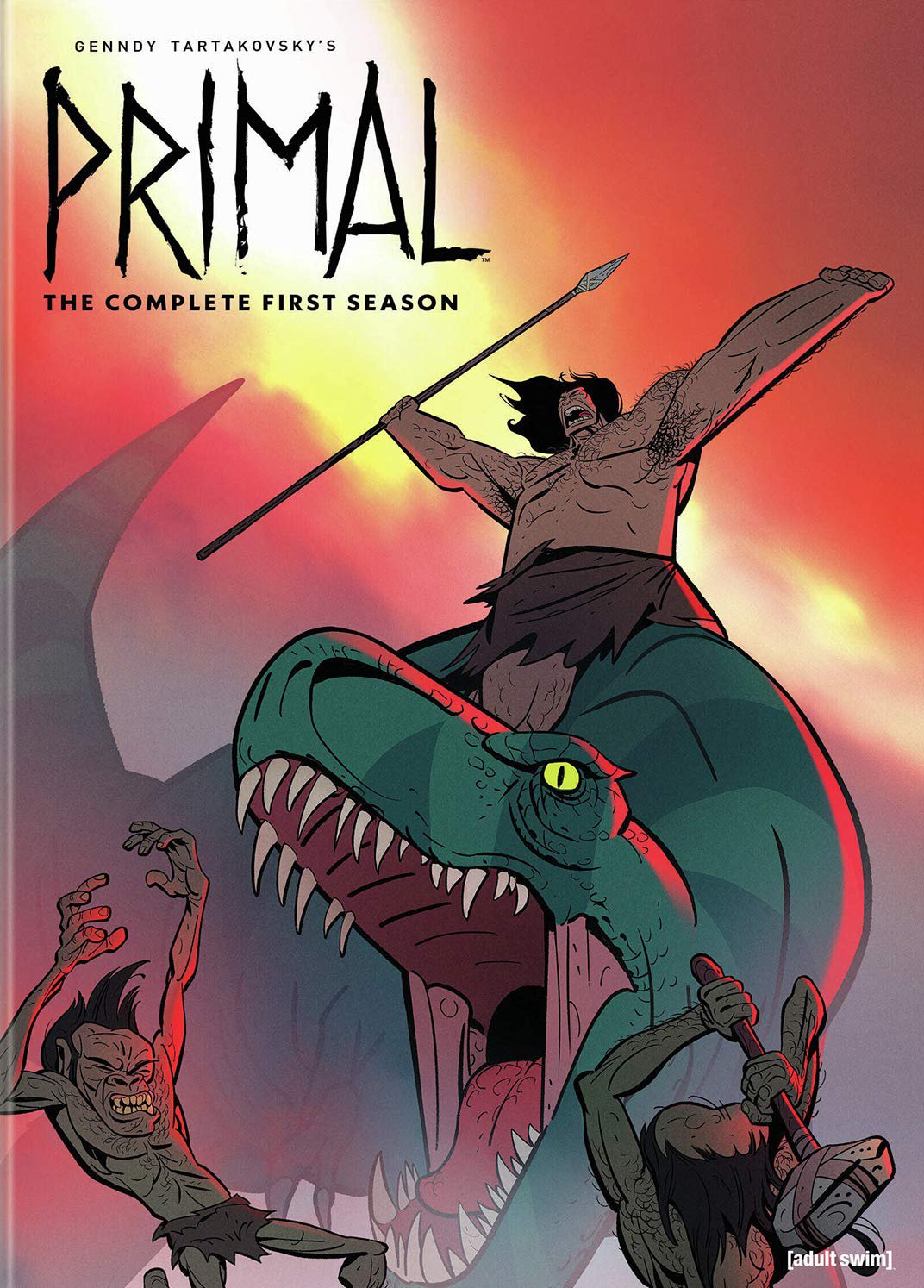Spear and Sorcery: The Influence of Robert E. Howard on Genndy Tartakovsky’s Primal
When Genndy Tartakovsky’s Primal premiered on Cartoon Network it was a breath of fresh air. Here was an animated series that was aimed at adults that was not a raunchy comedy. It was dark and violent but still had a heart. It was also beautifully drawn. It was also heavily influenced by the works of Robert E. Howard.
The shows creator has talked about Howard’s influence on the show in a variety of interviews. He talks about his inspirations at Thrillist.
The show follows a caveman and a dinosaur as they fight to survive in a primitive world. The credits list the caveman and dinosaur respectively as Spear and Fang. This is a reference to Robert E. Howard’s first published story “Spear and Fang.” (DMR bBoks has reprinted this story in Prehistoric Adventures.)
The influence goes beyond the names of the main characters. The show has an intensity that goes beyond the vast majority of TV shows, animated or not. The first scene is of Spear fishing. He is attacked by a river-going dinosaur. He survives and returns home only to find his family being slaughtered by a horned dinosaur. Griefstricken he climbs to a top of a mountain to consider suicide but choose not to. Eventually, he finds a tyrannosaurus, Fang, being attacked by the same horned dinosaur. Together they slay it. Thus they begin traveling together in this primitive world. All of this, by the way, is without dialogue.
The intensity is a mark of Howard’s influence. Howard pulled no punches and neither does the show. More than that, as Spear and Fang wander around their world they encounter horrific and supernatural characters. In the fourth episode “Terror Under the Blood Moon” Spear and Fang encounter a tribe of monkeys terrorized by horrific winged creatures like giant bats. On seeing this episode, I was immediately reminded of the Solomon Kane story “Wings in the Night.” The next episode “Rage of the Ape Man” has the duo fight a tribe of Ape Men who gain supernatural strength from drinking a potion given to them by their shaman. In “Coven of the Damned” they encounter witches performing human sacrifice. You could say that Genndy Tartakovsky combines prehistoric adventure with sword and sorcery and horror.
Howard was also known for combining genres. “The Apparition in the Ring,” for example, combined the boxing story with the ghost story. The Solomon Kane stories combined historical adventure with horror. Eventually, this evolved into sword and sorcery.
Genndy Tartakovsky
Another similarity is in setting. Howard’s Hyborean Age was essentially made up of different time periods: medieval Europe, Golden Age Piracy, the American Frontier and so on. The world of Primal is taken from many different epochs. Cavemen live alongside dinosaurs of different eras. Spear and Fang hunt wooly mammoths across a frozen landscape. Then the series hits a turning point in the final episode of the first season with the appearance of a more advanced human, Mira, running from slavery. It is also the first episode with dialogue. (Though not in English.)
This sets up the second season where Spear and Fang go on the quest to rescue Mira from her enslavers. They encounter more humans including cultures based on Bronze Age Celts, Norse Vikings, and Ancient Egyptians. It is notable that the Celts and the Norse are the bases of many barbarian races in fantasy. Interestingly, Spear is out of place among these people as Conan is among the civilized cultures of the Hyborean Age. It is an irony that Spear is a barbarian among groups often considered barbarians.
The oddest episode is the fifteenth episode, “The Primal Theory.” This episode does not feature Spear and Fang or take place in the same setting. Instead, it happens in a manor house in Victorian England. A group of scientists debate the origin of man. One of them, Charles, states that in time of crisis man will revert to his primal nature. Charles is denounced by his colleagues for believing this. The argument is interrupted by the arrival of the police who are searching for an escaped asylum inmate. It does not come as a surprise that the inmate breaks into the manor house and the following events prove Charles right.
The episode is extraordinarily suspenseful. Despite its setting, it is Howardian in theme. Howard said of his characters that “break the skin of civilization and you find the ape, roaring and red handed.” This proves true of the characters in the episode. In order to survive the night, the protagonists must embrace their savage side. Civilization turns out to be paper thin.
One major difference between Primal and Howard’s work is that in the former the theme of family resonates. The greatest tragedy of the series is the loss of Spear and Fang’s families. The character arc of the first four or five episodes is about Spear and Fang forming a bond, a bond that is later extended to Mira. They eventually become a new family. In Howard’s work, the theme of family is usually absent. Conan is alone and free. Solomon Kane too wanders the earth alone. I am not sure the theme would not have resonated with Howard, though. He spent much of his time taking care of his ill mother. He stubbornly refused to entertain the idea of putting her in a home. His family duties meant a lot to him, though I believe he also felt confined by them. The later may be why the theme of family is missing from much of Howard’s work.
Either way Primal and Howard’s work are alike in that they deal with blood, loss, tragedy, and violence. These themes are, for lack of a better word, primal to man. That’s why they resonate even in our supposedly civilized era.


